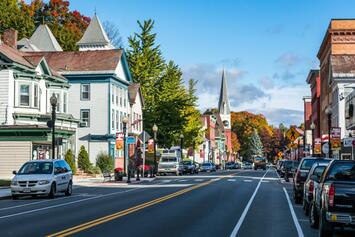
One of the far-too-often repeated statements made by urban, coastal elites is that one’s future cannot be found in the countryside. These city-centered Americans often believe that economic growth, jobs, and the nation’s future can only be found in big cities and that rural America remains a dead-end, brain-drained world with minimal opportunity.
The COVID-19 pandemic dispersed many Americans across the nation. And today, cities are not dominant in the hearts and minds of Americans whatsoever. In reality, not only are most Americans more interested in living in rural areas than in big cities, but many living in rural areas are quite optimistic about the future and still believe in the power of hard work.
Consider the fact that the 2021 American Community Life Survey found that just 19 percent of big-city dwellers rate their neighborhoods as excellent places to live. In contrast, 26 percent of those in small cities think that their neighborhoods are excellent. The differences are even more appreciable in the suburbs: 34 percent of those who reside in big-city suburbs and 29 percent of those in small-city suburbs state that their communities are excellent places to live. Residents of towns and rural areas are more positive about their communities too: 30 percent of those who live in small towns and 36 percent of those in rural areas rate their communities as excellent places to live.
Going further, Americans living in big cities feel less close to their neighbors than Americans living elsewhere. Forty-eight percent of big-city residents say they feel close to their neighborhood and the people who live there, compared to 54 percent of those who live in small towns and 55 percent of those living in rural areas, suggesting that urban cores are not capturing the imagination of the polity.
Turning to where Americans would like to reside, the results do not look good for big cities once again. The lion’s share of Americans actually want to live outside of big cities: 15 percent would ideally live in a small town and another 27 percent idealize a rural area. Put differently, 42 percent of Americans would like to live in rural areas and towns compared to a third (33 percent) who would prefer suburban areas. A minority — only 25 percent — want to live in cities.
Not only are Americans happier in small towns and rural areas, but they would ideally live there if possible.
Americans living in rural areas are also highly optimistic about the possibility of upward mobility. An overwhelming majority of Americans today — 68 percent — agree that hard work can lead to upward mobility for most. Looking at these responses by urbanity, 63 percent of big-city dwellers think that hard work will lead to success and 66 percent of small city residents feel the same way. But the figure increases when we look outside cities: 69 percent of those who reside in small towns and 73 percent of those in rural areas believe most Americans have a chance at upward mobility.
Younger generations are not sold on cities either. In fact, almost three-quarters (72 percent) of millennials who live in rural areas believe that hard work pays off, and that figure is notably higher than millennials living in suburbs of big cities (64 percent) or big cities themselves (61 percent). Millennials in rural areas are overwhelmingly optimistic but not those who live in big cities.
Read the rest of this piece at AEI.
Samuel J. Abrams is a professor of politics at Sarah Lawrence College and a nonresident senior fellow at the American Enterprise Institute.
Photo: courtesy AEI.org












